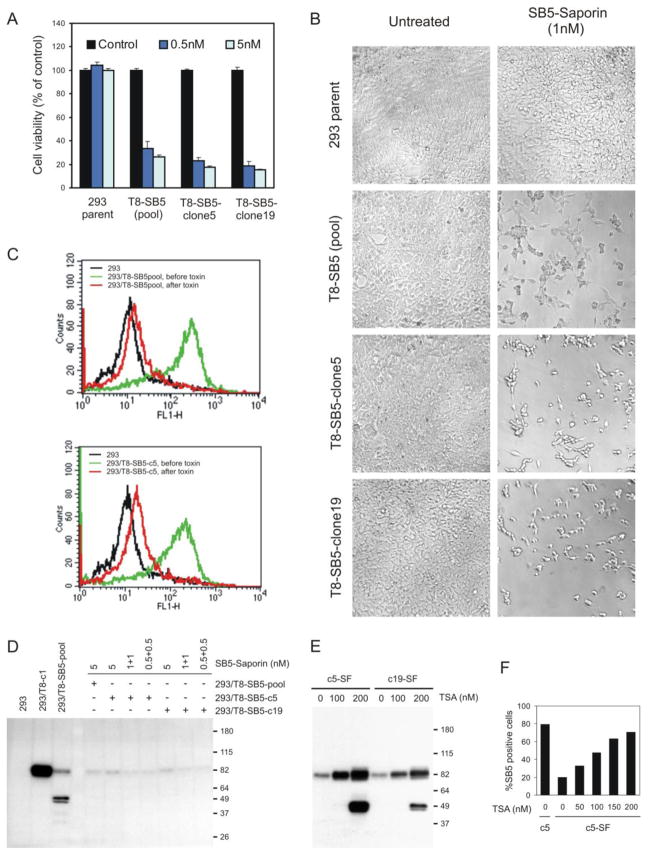FIGURE 3.
A fraction of the 293/T8-SB5 cell line and its clonally-derived sublines survive saporin-SB5 immunotoxin treatment by epigenetic silencing of TEM8 expression. A, 293, 293/T8-SB5 (pool), 293/T8-SB5-clone5 or 293/T8-SB5-clone19 cells were untreated (control) or treated with biotinylated SB5 mAbs and 0.5 nM or 5 nM of saporin-streptavidin and cell viability was measured 72 hours later. The percent viability of the clones was similar to that of the pool. B, A similar number of surviving 293/T8-SB5 cells from the pool or its clonally derived sublines was observed by Brightfield microscopy 96 hours post-treatment with SB5 mAbs and 1 nM of saporin-streptavidin. C, Flow cytometry staining with SB5 mAbs revealed a significant reduction in TEM8 expression on the cell surface of the 293/T8-SB5 pool (top panel) or a clone derived from this pool (293/T8-SB5-c5; bottom panel) two weeks following treatment with 5 nM of SB5-saporin immunotoxin. D, Immunoblotting (IB) for TEM8 revealed a loss of TEM8 expression in toxin-treated surviving cells from the 293/T8-SB5 pool or its subclones (clone 5 and clone 19). In this experiment cells were treated either twice with 0.5 nM of toxin 3 days apart (0.5+0.5), twice with 1 nM of toxin 3 days apart (1+1), or once with 5 nM of SB5-saporin (5). Two weeks later, cells which had recovered were analyzed by western blotting. E and F, Trichostatin A (TSA) treatment for 24-hours resulted in a dose-dependent rescue of TEM8 expression in the toxin-treated surviving fraction of 293/T8-SB5 clone 5 (c5-SF) and clone 19 (c19-SF) as detected by western blotting (E) or flow cytometry (F).

